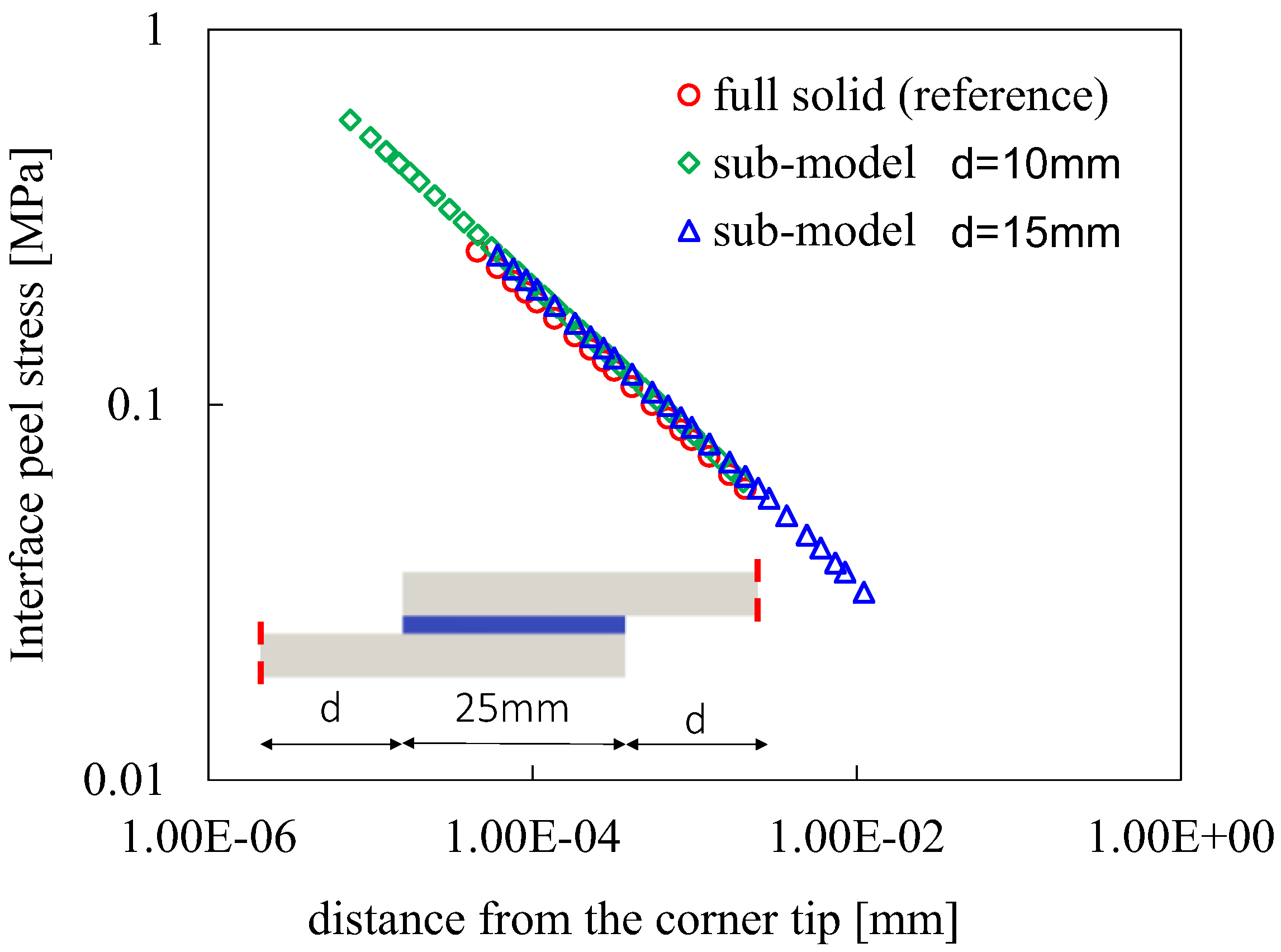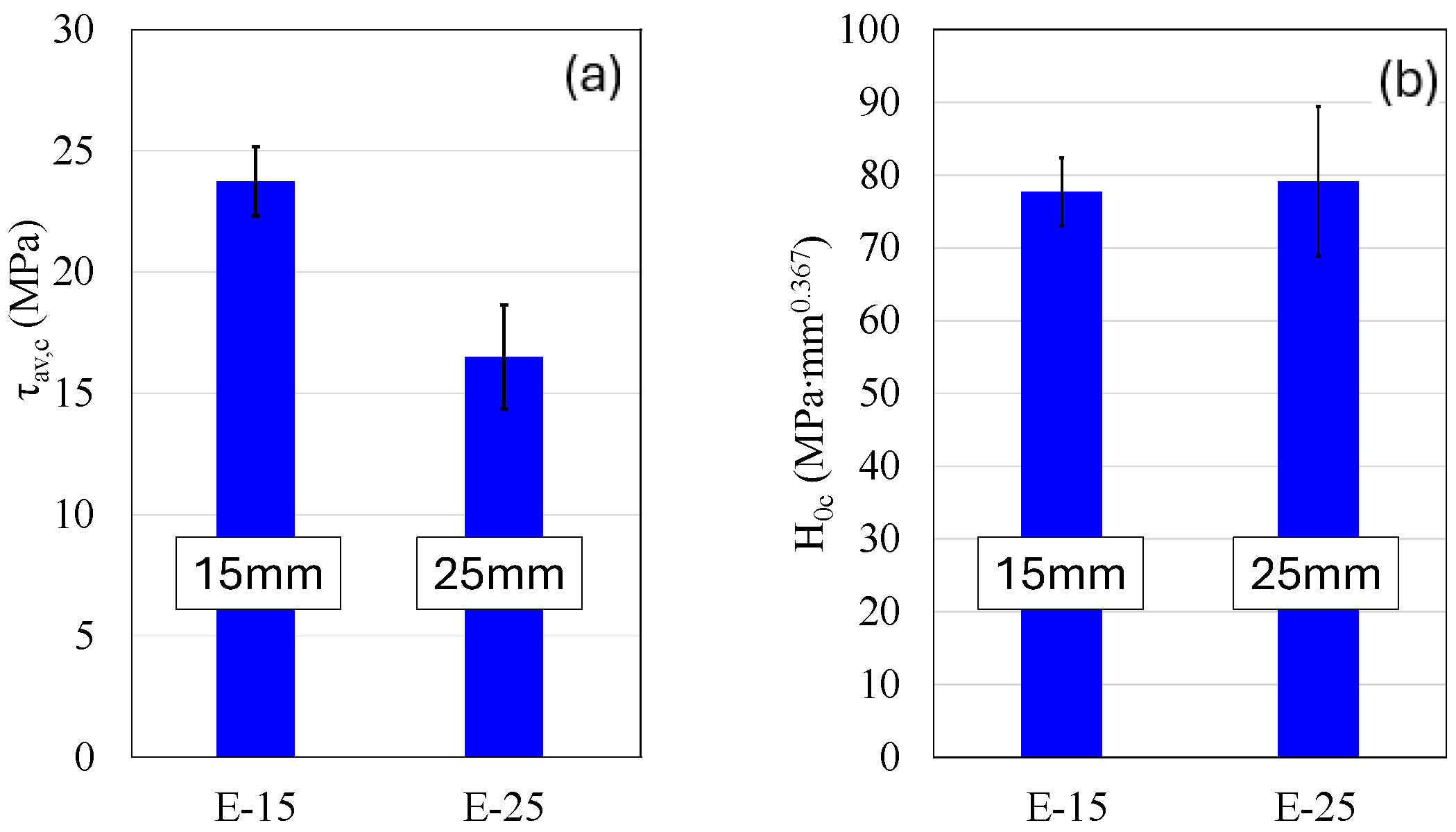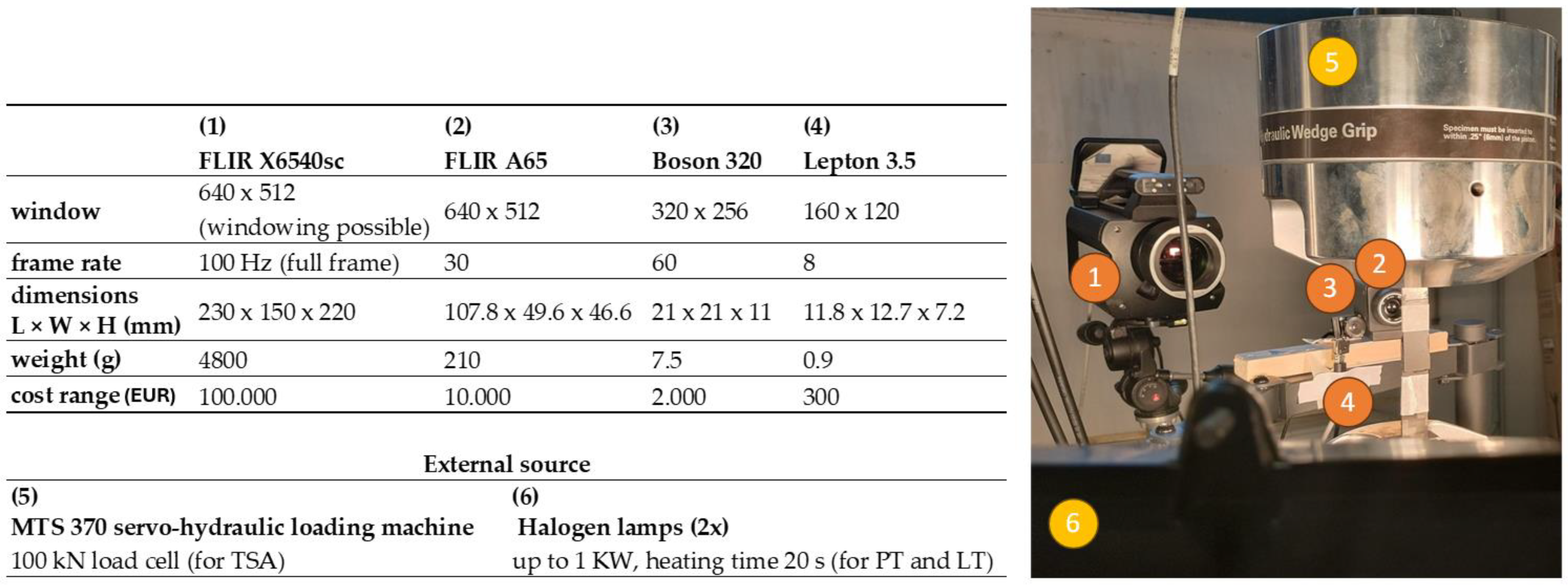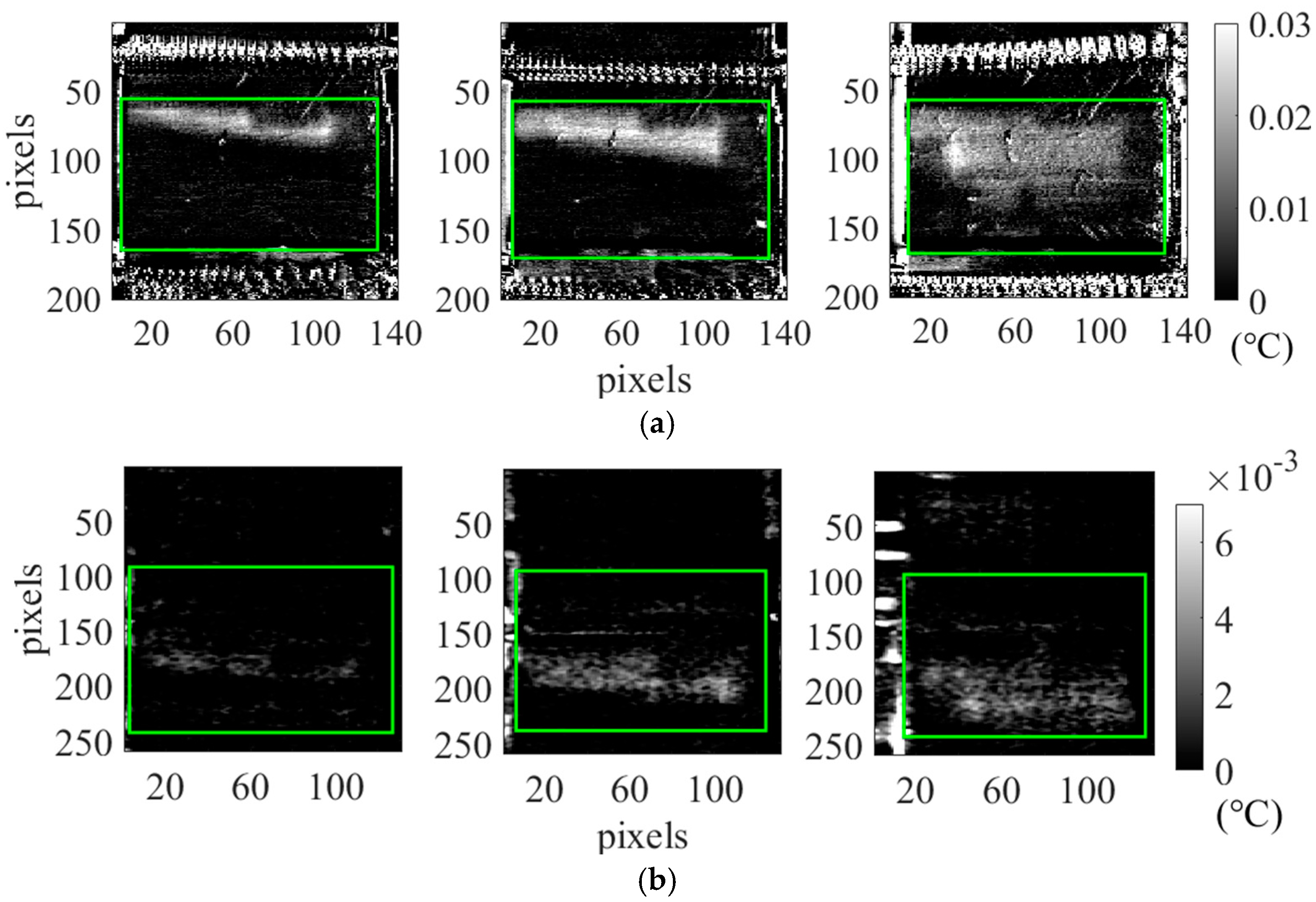Integrated Framework for Manufacturing, Design, and Monitoring of Composite-Bonded Joints: An Overview of the Results of the IDEA Project (MOST) †
Abstract
1. Introduction
- ○
- Implement an innovative pre-bonding surface treatment using chemical etching and scale the process to the industrial level. Lab tests will evaluate surface conditions and joint properties, followed by large-scale validation.
- ○
- Develop a structural design methodology for reliable bonded joints using a local approach and sub-modelling strategy, turning it into an industrial tool.
- ○
- Create a structural health monitoring (SHM) system based on thermographic techniques to ensure in-service safety and scalability to real components.
2. Etching Optimization and Process Scale-Up
2.1. Identification of the Optimal Etching Parameters
- ○
- MAT1: Adherends CC204 6K T800 T2/2 ER451; adhesive DP490.
- ○
- MAT2: Adherends C380 T700 2X2T; adhesive Betamate 2098.
2.2. Process Scale-Up and Application to a Component Prototype
3. Quasi-Static and Fatigue Tests
3.1. Results for MAT1
3.2. Results for MAT2
4. Modelling and Validation
5. Health Monitoring Systems
6. Conclusions
- (1)
- Increasing the technology readiness level (TRL) of previously developed lab-scale solutions for the chemical etching of composite-bonded joints, with the aim of enhancing bond strength and preventing the negative effects of contamination.
- (2)
- Developing a tool for the efficient application of a local model in industrial design workflows, aimed at assessing the static and fatigue strength of composite-bonded joints.
- (3)
- Defining strategies for the structural health monitoring (SHM) of composite-bonded joints, suitable for in-service applications on real components.
- ○
- Although preliminary tests showed an increase in joint strength following acid etching, the results from the scaled process did not reveal significant improvements. This is likely due to the higher overall quality of the bonding process, which resulted in failure primarily occurring within the adhesive or the adherends. Nevertheless, the etching treatment effectively eliminates potential surface contamination, thereby reducing the risk of weak bonds.
- ○
- The two-stage approach for calculating local stress fields proved to be highly accurate. The entire methodology, comprising both the model and the calculation approach, was successfully validated under both static and fatigue loading conditions. This represents a robust tool for more reliable bonded joint design, making it suitable for integration into industrial design workflows.
- ○
- IR-based SHM methods demonstrated reliability, even when using sensors with lower cost, size, and weight compared to lab-scale equipment such as cooled cameras. This marks an important step toward integrating these SHM techniques into real-world service conditions, enhancing the safety and reliability of composite-bonded structures.
Author Contributions
Funding
Informed Consent Statement
Data Availability Statement
Conflicts of Interest
References
- De La Pierre, S.; Giglia, V.; Sangermano, M.; Cornillon, L.; Damiano, O.; Ferraris, M. Etching of Carbon Fiber-Reinforced Plastics to Increase Their Joint Strength. J. Mater. Eng. Perform. 2020, 29, 242–250. [Google Scholar] [CrossRef]
- De La Pierre Des Ambrois, S.; Ferraris, M. Processo di Attacco Acido Della Superficie di Compositi a Matrice Polimerica Senza Interrompere la Continuità Delle Fibre, al Fine di Migliorare la Resistenza Meccanica di una Giunzione. Patent N. 102019000022026, 25 November 2019. [Google Scholar]
- Bogy, D.B. Edge-bonded dissimilar orthogonal elastic wedges undernormal and shear loading. J. Appl. Mech. 1968, 35, 460–466. [Google Scholar] [CrossRef]
- Lazzarin, P.; Quaresimin, M.; Ferro, P. A two-term stress function approach to evaluate stress distributions in bonded joints of different geometries. J. Strain Anal. Eng. Des. 2002, 37, 385–398. [Google Scholar] [CrossRef]
- Zappalorto, M.; Carraro, P.; Quaresimin, M. Analytical Solution For The Three-Dimensional Stress Fields In Anisotropic Composite Bimaterial Corners. Compos. Struct. 2015, 122, 127–138. [Google Scholar] [CrossRef]
- Quaresimin, M.; Ricotta, M. Life prediction of bonded joints in composite materials. Int. J. Fatigue 2006, 28, 1166–1176. [Google Scholar] [CrossRef]
- Palumbo, D.; De Finis, R.; Galietti, U. Thermoelastic stress analysis as a method for the quantitative non-destructive evaluation of bonded CFRP T-joints. NDT E Int. 2021, 124, 102526. [Google Scholar] [CrossRef]
- D’Accardi, E.; De Finis, R.; Dell’Avvocato, G.; Masciopinto, G.; Palumbo, D.; Galietti, U. Conduction thermography for non-destructive assessment of fatigue cracks in metallic materials. Infrared Phys. Technol. 2024, 140, 105394. [Google Scholar] [CrossRef]
- Palumbo, D.; Tamborrino, R.; Galietti, U.; Aversa, P.; Tatì, A.; Luprano, V.A.M. Ultrasonic analysis and lock-in thermography for debonding evaluation of composite adhesive joints. NDT E Int. 2016, 78, 1–9. [Google Scholar] [CrossRef]
- De Finis, R.; Palumbo, D.; Galietti, U. A new procedure for fatigue life prediction of CFRP relying on the first amplitude harmonic of the temperature signal. Int. J. Fatigue 2023, 168, 107370. [Google Scholar] [CrossRef]












| Code | Overlap [mm] | Surface Treatment | Quasi-Static Strength τav,c [MPa] | Fatigue—Cycles to Failure |
|---|---|---|---|---|
| MAT1 | 15 | Etched | 23.75 ± 1.43 | 71,000 ± 24,000 |
| Non-etched | 21.14 ± 1.69 | 110,000 ± 15,000 | ||
| 25 | Etched | 16.51 ± 2.15 | 70,000 ± 30,000 | |
| Non-etched | 17.75 ± 1.60 | 106,000 ± 41,000 |
| Code | Overlap [mm] | Surface Treatment | Quasi-Static Strength τav,c [MPa] | Fatigue—Cycles to Failure |
|---|---|---|---|---|
| MAT2 | 25 | Etched | 19.24 ± 0.35 | 35,000 ± 7700 |
| Non-etched | 19.37 ± 0.56 | 29,500 ± 1100 |
Disclaimer/Publisher’s Note: The statements, opinions and data contained in all publications are solely those of the individual author(s) and contributor(s) and not of MDPI and/or the editor(s). MDPI and/or the editor(s) disclaim responsibility for any injury to people or property resulting from any ideas, methods, instructions or products referred to in the content. |
© 2025 by the authors. Licensee MDPI, Basel, Switzerland. This article is an open access article distributed under the terms and conditions of the Creative Commons Attribution (CC BY) license (https://creativecommons.org/licenses/by/4.0/).
Share and Cite
Quaresimin, M.; Carraro, P.A.; Lamon, F.; Avataneo, S.G.; Basso, M.; Merulla, A.; Galietti, U.; D’Accardi, E.; Palumbo, D.; De Agostinis, M.; et al. Integrated Framework for Manufacturing, Design, and Monitoring of Composite-Bonded Joints: An Overview of the Results of the IDEA Project (MOST). Eng. Proc. 2025, 85, 53. https://doi.org/10.3390/engproc2025085053
Quaresimin M, Carraro PA, Lamon F, Avataneo SG, Basso M, Merulla A, Galietti U, D’Accardi E, Palumbo D, De Agostinis M, et al. Integrated Framework for Manufacturing, Design, and Monitoring of Composite-Bonded Joints: An Overview of the Results of the IDEA Project (MOST). Engineering Proceedings. 2025; 85(1):53. https://doi.org/10.3390/engproc2025085053
Chicago/Turabian StyleQuaresimin, Marino, Paolo Andrea Carraro, Federico Lamon, Silvia Giovanna Avataneo, Matteo Basso, Andrea Merulla, Umberto Galietti, Ester D’Accardi, Davide Palumbo, Massimiliano De Agostinis, and et al. 2025. "Integrated Framework for Manufacturing, Design, and Monitoring of Composite-Bonded Joints: An Overview of the Results of the IDEA Project (MOST)" Engineering Proceedings 85, no. 1: 53. https://doi.org/10.3390/engproc2025085053
APA StyleQuaresimin, M., Carraro, P. A., Lamon, F., Avataneo, S. G., Basso, M., Merulla, A., Galietti, U., D’Accardi, E., Palumbo, D., De Agostinis, M., Mele, M., Ferraris, M., Benelli, A., & Pandey, K. (2025). Integrated Framework for Manufacturing, Design, and Monitoring of Composite-Bonded Joints: An Overview of the Results of the IDEA Project (MOST). Engineering Proceedings, 85(1), 53. https://doi.org/10.3390/engproc2025085053











